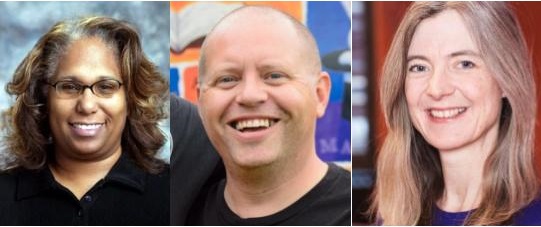Students playing key role in local journalism at some indie online sites
Independent web publishers from Texas, Wisconsin and Illinois discussed the benefits of their education-based work with youth reporters — ranging

Independent web publishers from Texas, Wisconsin and Illinois discussed the benefits of their education-based work with youth reporters — ranging from teens to graduate students — at the 2017 Local Independent Online News Publishers Conference held last month in Chicago.
At The 109 and Politifrog, Professor Jean Marie Brown has found her Texas Christian University journalism students more than capable of creating impactful journalism.
“They don’t always do it as quickly as a professional might,” Brown said, but if an editor shows college level reporters respect, they’ll execute.
The 109 is a hyperlocal news site serving the Dallas-Fort Worth region, while Politifrog covers national politics through a millennial lens. Students approach their work on both platforms with professionalism, and their reporting often appears in established local outlets.
Brown has found that providing students with the proper hardware and software opens them up to creating things a lot of old-school journalists might not be equipped to make — videos, maps, graphics.
Up in Wisconsin, independent outlet Madison 365 created the Madison 365 Academy as a way to give local teenagers the journalism bug. This project’s mission is to create a pipeline of talent for teens of color to make their way into the journalism industry.
“A lot of them would never have thought of going into journalism before they come to us,” said Associate Publisher Rob Chappell.
Madison 365 collaborates with the local Boys & Girls Club in this six-week program that challenges the teens to create four publishable pieces by the course’s end.
In the first week, they write opinion pieces (to get their own point of view out of their systems). The second week they interview and write profiles on local community leaders. After that, the students work on a news feature, then round the program out with a local history piece.
In the end, says Chappell, every student says they learned in a future job. Some 60 percent say they’re more likely to become journalists in the future.
Columbia College journalism professor Suzanne McBride worked with a group journalism students in the spring of 2010 to create the hyperlocal Austin Talks, named after Chicago’s most populated neghborhood, Austin.
Before the launch of Austin Talks, local media tended toward one-dimensional coverage of the neighborhood, focusing on violence.
“There’s so much more to this neighborhood than that,” said McBride.
Now, Columbia undergrad and graduate students work to provide the region with a website that is “of and for the community.”
The staff welcomes feedback, suggestions and commentary from residents. In return, students at Austin Talks have been welcomed.
“I am really a big believer in students having to get out in the community and cover local news,” said McBride. “Once you put them into a community and they have that first experience covering a hot issue, […] they totally get put on fire.”
Ultimately, Brown, Chappell and McBride find their students write impactful work that can help build their skill sets and guide them into the industry. Working with student reporters can help build relationships in the community. And, often, a student’s work is good enough to end up published in local legacy publications.
Sign up for the weekly newsletter
Join the LION mailing list to get our weekly roundup of opportunities and resources for news entrepreneurs. View our most recent issues.
Related Articles
How five LION members are maximizing revenue and community engagement through events
Whether you’re a solopreneur or part of a larger team, there are in-person event opportunities for everyone.
Jess deRivera joins LION Publishers as our Membership Services Manager
She’ll help provide a seamless experience to current and prospective members.
Four big opportunities that local news publishers can pursue right now
Here’s how to capitalize on each one.
